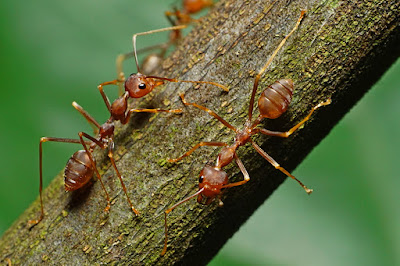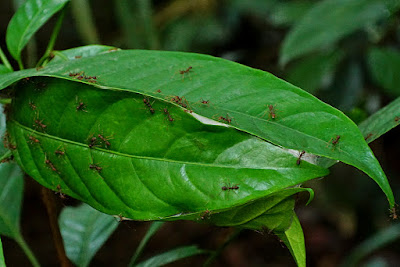Weaver Ants
Ants construct their nest in a wide array of locations such as in soil, wood and trees. Weaver ants, unlike other tree dwelling ants, build a remarkable nest by "stitching" together leaves using silk from their larvae.
 |
| Red weaver ants (Genus Oecophylla) |
Working as a team, workers pull and bend leaves using their strong mandible. Other workers carry larvae and then gently squeeze them with their jaw to secrete silk which will glue the leaves together. Occasionally a leave might be out of reach for a worker to grab. In such cases, several individuals will hold on to each other, forming a living bridge.
 |
| Nest of the weaver ants. |
Weaver ants are beneficial to humans too. The larvae, also known as ant eggs because of their shape and whitish color, are eaten by people in Indo-China. Because weaver ants are very protective of their nest and will not hesitate to bite when disturbed, they are useful as a natural pest control. Indeed, farmers are known to deliberately introduce weaver ants in their land to repel pests that otherwise would destroy their crop.